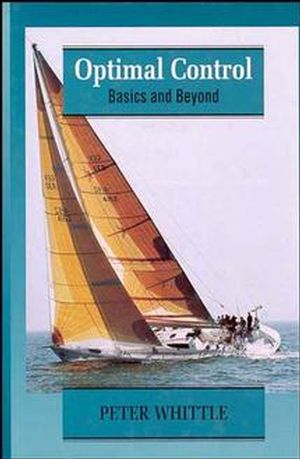Optimal Control: Basics and BeyondISBN: 978-0-471-95679-2
Hardcover
474 pages
August 1996
 This is a Print-on-Demand title. It will be printed specifically to fill your order. Please allow an additional 10-15 days delivery time. The book is not returnable.
|
||||||
The concept of a system as an entity in its own right has emergedwith increasing force in the past few decades in, for example, theareas of electrical and control engineering, economics, ecology,urban structures, automaton theory, operational research andindustry. The more definite concept of a large-scale system isimplicit in these applications, but is particularly evident infields such as the study of communication networks, computernetworks and neural networks. The Wiley-Interscience Series inSystems and Optimization has been established to serve the needs ofresearchers in these rapidly developing fields. It is intended forworks concerned with developments in quantitative systems theory,applications of such theory in areas of interest, or associatedmethodology.
This is the first book-length treatment of risk-sensitive control,with many new results. The quadratic cost function of the standardLQG (linear/quadratic/Gaussian) treatment is replaced by theexponential of a quadratic, giving the so-called LEQG formulationallowing for a degree of optimism or pessimism on the part of theoptimiser. The author is the first to achieve formulation and proofof risk-sensitive versions of the certainty-equivalence andseparation principles. Further analysis allows one to formulate theoptimization as the extremization of a path integral and tocharacterize the solution in terms of canonical factorization. Itis thus possible to achieve the long-sought goal of an operationalstochastic maximum principle, valid for a higher-order model, andin fact only evident when the models are extended to therisk-sensitive class. Additional results include deduction ofcompact relations between value functions and canonical factors,the exploitation of the equivalence between policy improvement andNewton Raphson methods and the direct relation of LEQG methods tothe H??? and minimum-entropy methods. This book will proveessential reading for all graduate students, researchers andpractitioners who have an interest in control theory includingmathematicians, engineers, economists, physicists andpsychologists. 1990 Stochastic Programming Peter Kall, Universityof Zurich, Switzerland and Stein W. Wallace, University ofTrondheim, Norway Stochastic Programming is the first textbook toprovide a thorough and self-contained introduction to the subject.Carefully written to cover all necessary background material fromboth linear and non-linear programming, as well as probabilitytheory, the book draws together the methods and techniquespreviously described in disparate sources. After introducing theterms and modelling issues when randomness is introduced in adeterministic mathematical programming model, the authors coverdecision trees and dynamic programming, recourse problems,probabilistic constraints, preprocessing and network problems.Exercises are provided at the end of each chapter. Throughout, theemphasis is on the appropriate use of the techniques, rather thanon the underlying mathematical proofs and theories, making the bookideal for researchers and students in mathematical programming andoperations research who wish to develop their skills in stochasticprogramming. 1994
This is the first book-length treatment of risk-sensitive control,with many new results. The quadratic cost function of the standardLQG (linear/quadratic/Gaussian) treatment is replaced by theexponential of a quadratic, giving the so-called LEQG formulationallowing for a degree of optimism or pessimism on the part of theoptimiser. The author is the first to achieve formulation and proofof risk-sensitive versions of the certainty-equivalence andseparation principles. Further analysis allows one to formulate theoptimization as the extremization of a path integral and tocharacterize the solution in terms of canonical factorization. Itis thus possible to achieve the long-sought goal of an operationalstochastic maximum principle, valid for a higher-order model, andin fact only evident when the models are extended to therisk-sensitive class. Additional results include deduction ofcompact relations between value functions and canonical factors,the exploitation of the equivalence between policy improvement andNewton Raphson methods and the direct relation of LEQG methods tothe H??? and minimum-entropy methods. This book will proveessential reading for all graduate students, researchers andpractitioners who have an interest in control theory includingmathematicians, engineers, economists, physicists andpsychologists. 1990 Stochastic Programming Peter Kall, Universityof Zurich, Switzerland and Stein W. Wallace, University ofTrondheim, Norway Stochastic Programming is the first textbook toprovide a thorough and self-contained introduction to the subject.Carefully written to cover all necessary background material fromboth linear and non-linear programming, as well as probabilitytheory, the book draws together the methods and techniquespreviously described in disparate sources. After introducing theterms and modelling issues when randomness is introduced in adeterministic mathematical programming model, the authors coverdecision trees and dynamic programming, recourse problems,probabilistic constraints, preprocessing and network problems.Exercises are provided at the end of each chapter. Throughout, theemphasis is on the appropriate use of the techniques, rather thanon the underlying mathematical proofs and theories, making the bookideal for researchers and students in mathematical programming andoperations research who wish to develop their skills in stochasticprogramming. 1994



